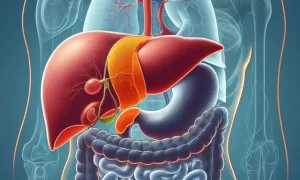Sanofi abandoned the development of mRNA COVID-19 vaccine
- Normal Liver Cells Found to Promote Cancer Metastasis to the Liver
- Nearly 80% Complete Remission: Breakthrough in ADC Anti-Tumor Treatment
- Vaccination Against Common Diseases May Prevent Dementia!
- New Alzheimer’s Disease (AD) Diagnosis and Staging Criteria
- Breakthrough in Alzheimer’s Disease: New Nasal Spray Halts Cognitive Decline by Targeting Toxic Protein
- Can the Tap Water at the Paris Olympics be Drunk Directly?
Sanofi abandoned the development of mRNA COVID-19 vaccine
- Should China be held legally responsible for the US’s $18 trillion COVID losses?
- CT Radiation Exposure Linked to Blood Cancer in Children and Adolescents
- FDA has mandated a top-level black box warning for all marketed CAR-T therapies
- Can people with high blood pressure eat peanuts?
- What is the difference between dopamine and dobutamine?
- How long can the patient live after heart stent surgery?
Sanofi abandoned the development of mRNA COVID-19 vaccine, will explore modified mRNA technology.
Based on unmodified mRNA technology, there may be technical lag in the next COVID-19 vaccine research and development.
Sanofi’s “timely stop loss” has also received positive feedback from the market. For the COVID-19 vaccine market currently in the “Red Sea”, the true ceiling may be that the pandemic era is about to pass.
Sanofi’s US$3.2 billion acquisition of TranslBio is still in ink, and the large French pharmaceutical company is already adjusting its research and development plan. Sanofi abandoned the development of the mRNA COVID-19 vaccine based on the interim data of the phase 1/2 clinical trial, and will focus on the development of the mRNA influenza vaccine in the future.
First of all, Sanofi believes that the mid-term clinical results are positive, but believes that it is of no value to launch the mRNA COVID-19 vaccine on the market long after Pfizer and Moderna. Two weeks after receiving the second dose of the vaccine, 91% to 100% of the participants in the three doses had a four-fold or more increase in neutralizing antibody levels from baseline. Sanofi said that there are no safety issues and the tolerance is “equal” to other unmodified mRNA vaccines.
Among them, Pfizer/BioNTech and Moderna developed chemically modified mRNA technologies to try to bypass the inflammatory response to foreign nucleic acids, while CureVac and TranslBio’s unmodified mRNA technologies evade detection by the immune system by relying on changes in RNA sequences.
The great success of Pfizer/BioNTech and Moderna vaccines is in sharp contrast with CureVac’s clinical data. Although the variant cycle in the CureVac clinical trial may partially explain the different efficacy results, with the research also supporting the situation, researchers have seen that modification of mRNA is a critically successful way.
Sanofi seems to have joined the queue of supporters of modified mRNA. Translate Bio, acquired by Sanofi for US$3.2 billion, focuses on unmodified mRNA and the Shire research team behind its platform. In July of this year, Thomas Triomphe, head of Sanofi Pasteur, told investors that the company will explore unmodified and modified mRNA to obtain the best constructs.
However, modified mRNA is now the focus of Sanofi. In a statement disclosing Phase 1/2 clinical data, Sanofi stated that it is “accelerating the conversion of the platform into modified mRNA.”
Sanofi’s goal next year is to clinically launch a modified quadrivalent influenza mRNA vaccine. Sanofi and Translate Bio became the first companies to start testing seasonal mRNA influenza vaccine candidates in June, but their attention has turned to their modified quadrivalent vaccines. This week, Pfizer began a phase 1 clinical trial of a quadrivalent mRNA vaccine against influenza.
In addition, Sanofi and the United Kingdom GlaxoSmithKline (GSK.US) co-developed recombinant protein COVID-19 vaccine (including adjuvant) Phase III clinical trial results are expected to be announced before the end of this year.
Sanofi abandoned the development of mRNA COVID-19 vaccine
(source:internet, reference only)
Disclaimer of medicaltrend.org
Important Note: The information provided is for informational purposes only and should not be considered as medical advice.



